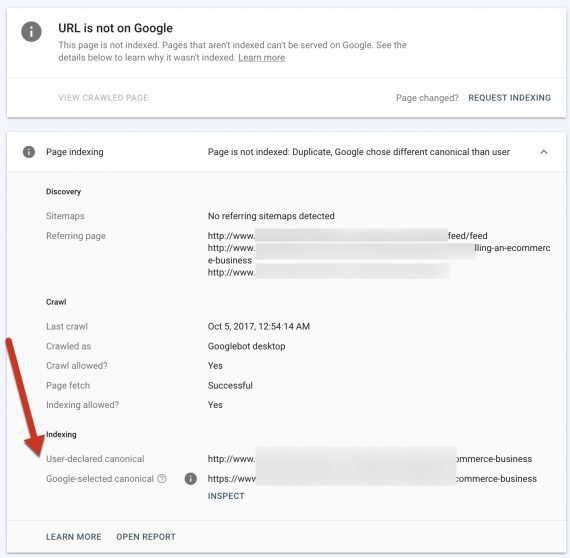SEO: Canonical Tags Dos and Don’ts
[ad_1]
Web sites typically have equivalent pages throughout two or extra URLs. It presents a dilemma for search engines like google and yahoo to know which web page to prioritize in rankings. That’s the aim of a canonical tag — rel= “canonical.” It tells Google, Bing, and others which equivalent (or close to equivalent) web page to rank by pointing the tag(s) from the duplicates to the unique.
But the tag is usually misunderstood and misused. What follows are dos and don’ts for deploying canonical tags.
Not Definitive
A canonical tag is simply a touch to Google. It’s not definitive and shouldn’t be the primary alternative when correcting duplicate content. Google makes use of many indicators to choose the consultant URL. The content material proprietor’s instruction is just one of them.
Others embrace:
- Inner hyperlinks. The duplicate web page receiving essentially the most inside hyperlinks is presumably crucial.
- XML sitemaps. Duplicate pages in a sitemap are sometimes the precedence over non-sitemap variations.
- Encryption. Google often chooses the https model over http.
- Quantity and high quality of a web page’s content material. Google refers to a web page’s main content material because the “centerpiece.” When the centerpiece is analogous or equivalent to different pages, Google makes an attempt to know which is extra helpful and selects that web page in search outcomes.
Google might use a mix of the above indicators. And pointing a rel=” canonical” tag (e.g., rel= “canonical” href= “https://www.xyz.com/heres-an-article”) from one web page to a different is probably going pointless (to Google) if the location construction suggests in any other case.
If it overrides your rel= “canonical” tag, Google will embrace a piece in Search Console at Indexing > Pages (referred to as “Duplicate, Google selected completely different canonical than person”) and clarify why.

Google stories in Search Console when it overrides a canonical tag and explains why. Click on picture to enlarge.
Google’s overriding of canonical tags is frequent and will not point out a major problem. The exceptions are when Google chooses the flawed URL, or your website has materials architectural flaws, akin to linking to lesser inside URLs. Nonetheless, verify the report often and repair duplication glitches.
In a latest LinkedIn submit, Google’s Gary Illyes posed a hypothetical canonicalization battle:
You’ve gotten a rel=canonical pointing from A to B, however A is HTTPS, it’s in your hreflang clusters [assigning a language version to a specific region], all of your hyperlinks are pointing to A, and A is included in your sitemaps as a substitute of B. Which one ought to search engines like google and yahoo choose as canonical, A or B?
In case you simply change the URLs from A to B in your sitemaps and hreflang clusters, mixed with that rel=canonical it’d already be sufficient to tip over canonicalization to B. Change the hyperlinks additionally, and you’ve got an excellent larger likelihood to persuade search engines like google and yahoo about your canonical choice.
In different phrases, the extra indicators it receives for a canonicalization choice, the higher possibilities of Google choosing the proper web page. Nonetheless, Google might ignore the indicators and select what it thinks is the best choice. For instance, if a number of indicators prioritize a web page’s desktop model, Google should still serve a cellular model to a cellular person.
Illyes has additionally stated that canonical tags ought to use absolute URLs to be acknowledged by search engines like google and yahoo.
Duplicate Content material Solely
One other frequent mistake of web site house owners is making an attempt to direct indicators utilizing rel=” canonical” even when there’s no duplicate content material. For instance, I’ve seen house owners construct exterior hyperlinks to an on-site infographic after which use canonical tags to redirect that hyperlink fairness to a lead era web page.
Google would deal with the infographic and lead-generation pages otherwise as a result of there’s no duplicate content material.
Backside line, Google is aware of canonicalization. A web site proprietor can nonetheless guarantee Google’s selections are right with the correct use of canonical tags. However the bigger problem is ignoring duplicate content material altogether.
[ad_2]
Source link

